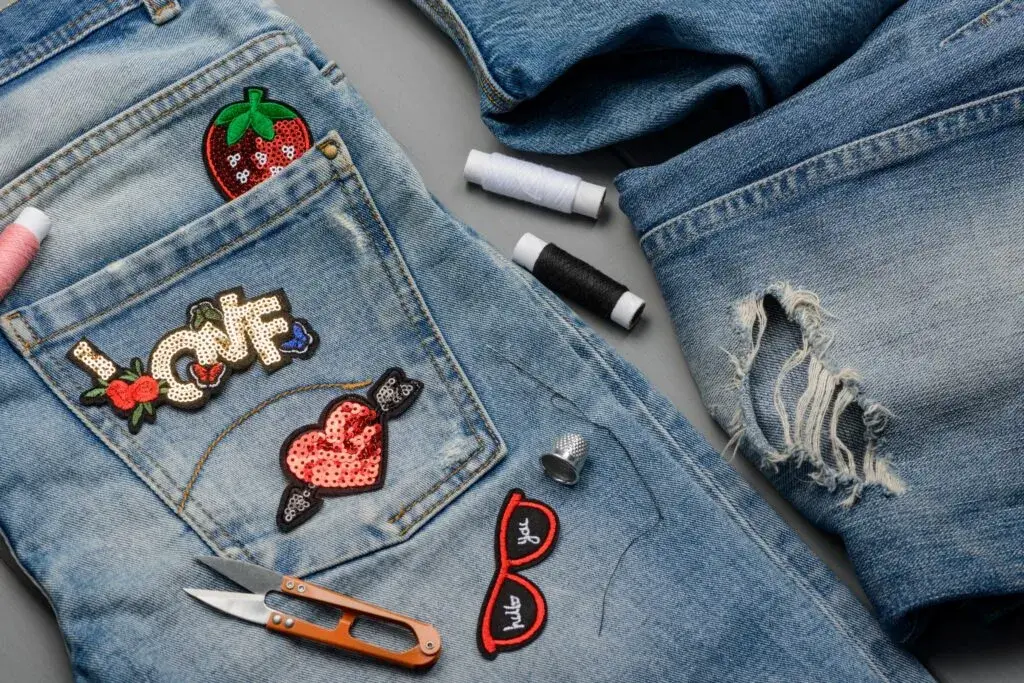Will Velcro Patches Stick to Felt?
Velcro and Felt: The Perfect Crafting Match!
Ever wondered if Velcro patches would stick to felt? If you're a sewing enthusiast or a creative crafter, chances are you've got both Velcro and felt in your stash (and for good reason!).
Velcro, with its handy combination of loops and hooks, is a fastening superstar when it comes to clothes and other fabric projects. But some materials work better with it than others.
The good news? Felt is a fantastic choice for fabrics Velcro patchesWe'll dive deeper into why and explore some exciting crafting possibilities in the next section.
Velcro on Felt: A Match Made in Crafting Heaven!
So, you've got some awesome Velcro patches and some fantastic felt, but will they work together? The answer is a resounding YES! Here at TheStudio.com, we love seeing all the creative ways people use Velcro and felt in their projects.
Why is felt such a great partner for Velcro patches? It all boils down to texture! Felt has a fuzzy surface full of tiny fibers, which act like little hooks that grab onto the loops on the back of your Velcro patch. This creates a strong and secure bond, perfect for all sorts of crafting fun.
Here's what makes felt and Velcro such a dream team:
- Easy Attachment: Forget fiddly sewing or messy glue! Just press the Velcro patch onto your felt and you're ready to create.
- Strong Hold: The textured surface of felt provides excellent grip for the Velcro, ensuring your patches stay put.
- Endless Possibilities: Felt comes in a dazzling array of colors and thicknesses, making it perfect for any project you can imagine.
How Velcro and Felt Interact
We all know the satisfying "WHOOSH" sound of Velcro fastening. But have you ever wondered how this ingenious invention actually works? Velcro is a type of hook-and-loop fastener – it has two sides, one covered in tiny hooks and the other with soft loops. These sides interlock, creating a secure and easy-to-use closure.
Did you know Velcro was inspired by nature? In the 1940s, a Swiss engineer named Georges de Mestral, noticed burrs clinging to his clothes and his dog's fur after a walk. Inspired by this "sticky" plant, he spent years perfecting the design, and Velcro was born!
Let’s explore some fantastic ideas in the next section!
Velcro Adhesive and Felt
To ensure your Velcro patches stick securely to your felt project, follow these simple tips:
- Clean Surface: Make sure your felt is clean and dry before applying the Velcro. Any dirt or moisture can weaken the adhesive bond.
- Consider Your Needs: While self-adhesive Velcro is convenient, sew-on or iron-on Velcro might be a better option for long-term projects or heavy-duty applications. Sew-on Velcro offers maximum durability, while iron-on Velcro is a great choice for quick and easy attachment.
By following these guidelines, you can create strong and long-lasting connections between your Velcro patches and your felt projects.
Finding the Perfect Felt for Your Velcro Project:
Great news! We've established that Velcro and felt are a fantastic crafting duo. But did you know that felt thickness can affect how well the Velcro sticks?
Thinner is your friend: Thinner felt, with its rougher surface, provides more texture for the Velcro hooks to grab onto, creating a stronger bond.
Thicker felt: While thicker felt offers great durability, it can sometimes have a smoother surface that might make Velcro adhesion a bit trickier.
Acrylic felt: Heads up, crafters! Acrylic felt, in particular, might not always have enough texture for a super strong Velcro hold.
Removing and Reapplying Velcro on Felt
While Velcro is a fantastic tool for crafting, it's important to be mindful of its impact on your felt projects. Repeatedly tearing off and reapplying self-adhesive Velcro can lead to a few issues:
- Weakened Adhesive: The adhesive can become less effective with each removal, potentially leading to a loose or unreliable bond.
- Damaged Felt: The constant tugging and pulling can damage the delicate fibers of the felt, causing it to look fuzzy and worn.
- Reduced Reusability: A damaged felt surface may limit its potential for future projects.
For more durable and reusable Velcro attachments, consider these options:
- Iron-On Velcro: Easy to apply and remove, iron-on Velcro is a great choice for frequent changes.
- Sew-On Velcro: Offers the most secure and long-lasting attachment, perfect for projects that require frequent removal and reapplication.
By choosing the right type of Velcro and using it carefully, you can ensure that your felt projects remain beautiful and functional for years to come.
What Fabrics Does Velcro Stick To?
Velcro, with its convenient hook-and-loop design, is a popular choice for fastening various items. But what fabrics work best with Velcro? Let's dive into some of the most common materials that are compatible with this versatile fastener.
Cotton: A Classic Choice
Cotton, a natural and soft fabric, is a popular choice for clothing and crafting projects. Its smooth surface provides an excellent base for Velcro to adhere to. To ensure optimal adhesion, make sure your cotton fabric is clean and free from dirt or lint.
Polyester: Durable and Versatile
Polyester, a synthetic fabric known for its durability and moisture-wicking properties, is often used in sportswear and outdoor gear. It doesn’t have the best eco-credentials but its smooth texture makes it highly compatible with Velcro. Before applying Velcro to polyester, clean the surface to remove any debris or residue.
Nylon: Strong and Reliable
Nylon, another synthetic fabric, is renowned for its strength and water resistance. It's commonly used in outdoor gear, such as backpacks and jackets. Nylon's smooth surface provides a good grip for Velcro, making it a reliable choice for attaching patches, badges, or other accessories.
Key Tips for Optimal Velcro Adhesion:
- Clean the Surface: Ensure the fabric is clean and dry before applying Velcro.
- Choose the Right Velcro: Select the appropriate type of Velcro for your specific project, whether it's self-adhesive, sew-on, or hook-and-loop tape.
- Apply Pressure: After applying Velcro, press firmly to ensure a strong bond.
By following these tips, you can enjoy the convenience and versatility of Velcro on your favorite fabrics.
Attaching Velcro to Felt
When attaching Velcro to felt, you have several options depending on whether you want a temporary or permanent bond.
- Temporary Attachment: If you need a quick fix, self-adhesive Velcro is easy to apply but may not hold up over time.
- Permanent Attachment: For a stronger, longer-lasting bond, sew-on or glue-on Velcro is your best bet.
Final Thoughts
Velcro and felt are a perfect pairing for a variety of craft and sewing projects. Whether you're adding patches to clothing or creating custom accessories, Velcro provides a secure, easy-to-use fastening solution. If you’re looking for custom velcro patches for your next project, explore what THE/STUDIO can create for you. Let your creativity soar with custom patches that bring your vision to life!




